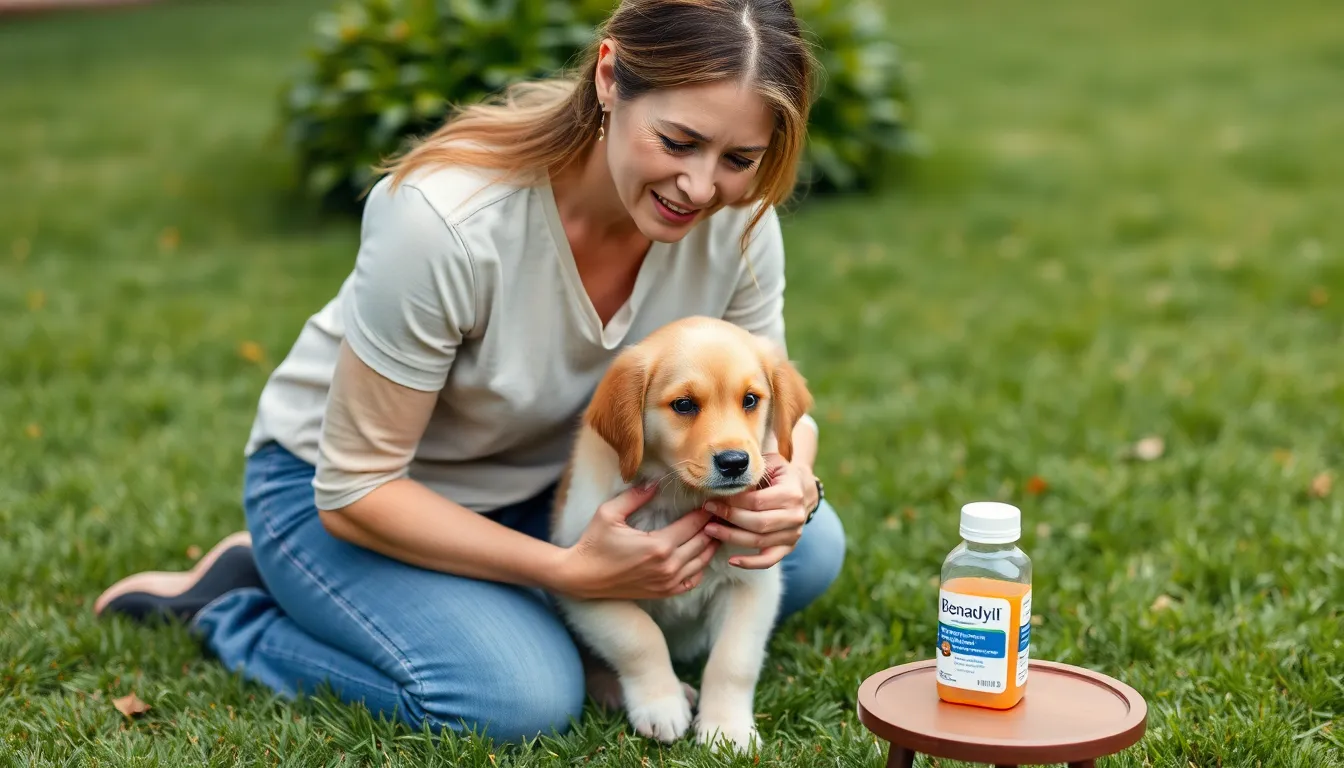When it comes to keeping furry friends comfortable, pet owners often find themselves turning to Benadryl. This over-the-counter allergy remedy can be a lifesaver for dogs dealing with pesky allergies or travel anxiety. But how often can you give your pup this magical pink pill without turning them into a sleepyhead?
Table of Contents
ToggleUnderstanding Benadryl for Dogs
Benadryl serves as an effective allergy medication for both humans and dogs. This over-the-counter drug offers relief from various allergy symptoms and anxiety.
What Is Benadryl?
Benadryl, commonly known by its active ingredient diphenhydramine, acts primarily as an antihistamine. It’s FDA-approved for human use and often prescribed for allergic reactions, hay fever, and motion sickness. For dogs, Benadryl helps alleviate symptoms like itching, sneezing, and rashes. It may also assist in managing mild cases of anxiety during stress-inducing events such as travel or thunderstorms. However, determining the appropriate dosage requires understanding a dog’s weight and health status.
How Does It Work?
Benadryl functions by blocking histamines, which are chemicals released during allergic reactions. These histamines trigger symptoms like swelling and itching. When administered to dogs, Benadryl reduces these effects, leading to improved comfort. The drug crosses the blood-brain barrier, causing sedation in many dogs. This drowsiness can be beneficial for anxious pets during stressful situations. Pet owners should monitor their dogs for side effects, such as excessive lethargy, before considering repeated doses.
Recommended Dosage

Dosage for Benadryl in dogs varies based on their weight. It’s essential to follow guidelines to ensure safety and effectiveness.
General Guidelines
A common recommendation for administering Benadryl is 1 mg per pound of body weight. This dosage can be given every 8 to 12 hours as needed. For example, a 30-pound dog may receive 30 mg of Benadryl. It’s important to consult with a veterinarian before starting any medication. They can affirm specific dosage based on individual health factors. Monitoring for side effects, particularly drowsiness, remains crucial after administering the medication.
Factors Affecting Dosage
Several factors influence how much Benadryl a dog can safely take. Weight serves as a primary factor, dictating initial dosage amounts. Age and overall health also play significant roles. Older dogs may metabolize drugs differently, potentially requiring adjusted doses. Concurrent medications might cause interactions, making it necessary to consider these in dosage calculations. Stress levels can affect responses to the medication, so understanding your dog’s unique needs remains essential.
Frequency of Administration
Administering Benadryl to dogs requires careful consideration of timing. Typically, the medication can be given every 8 to 12 hours, based on the dog’s weight and health status.
How Often Can You Give Dogs Benadryl?
In general, dogs can receive Benadryl every 8 to 12 hours as needed. For a 30-pound dog, this translates to a dose of approximately 30 mg at each interval. Owners must consult with a veterinarian to confirm the appropriate dosing schedule tailored to their dog’s specific situation. Factors such as age and overall health play crucial roles in determining how often the medication can be safely given.
Signs That Indicate Re-dosing
Monitoring dogs for side effects helps ensure safe administration of Benadryl. Signs that suggest re-dosing may be necessary include persistent itching, sneezing, or signs of anxiety. Pet owners should remain vigilant for excessive lethargy, as this could indicate that their dog needs a break from the medication. Additionally, if allergy symptoms diminish, it may signal that a re-dose isn’t necessary at that time. Each dog’s response varies, requiring careful observation for best results.
Safety Considerations
Administering Benadryl to dogs requires careful consideration of safety factors. Pet owners must remain vigilant regarding potential side effects, which can include excessive drowsiness, dry mouth, and urinary retention.
Potential Side Effects
Many dogs experience drowsiness after taking Benadryl, a common side effect due to its antihistamine properties. Some pets may exhibit dry mouth or increased thirst, prompting a need for more water. Gastrointestinal upset, such as diarrhea or vomiting, can also occur. In rare cases, dogs might experience allergic reactions to the medication, manifesting as hives or difficulty breathing. Monitoring a dog’s reaction post-administration allows for prompt attention to any concerning signs.
Precautions to Take
Consulting with a veterinarian ensures that Benadryl is appropriate for a specific dog. Individual health conditions, such as glaucoma or heart disease, may complicate use. Accurate dosing based on body weight is crucial, as overdosing can lead to severe consequences. Avoid mixing Benadryl with other medications unless advised by a veterinarian. Observing the dog’s behavior after the first dose helps assess tolerance and overall reaction.
Understanding how often to give dogs Benadryl is essential for maintaining their health and well-being. With careful monitoring and adherence to dosage guidelines, pet owners can effectively manage allergy symptoms and anxiety in their dogs. Consulting a veterinarian ensures that the chosen treatment plan aligns with the dog’s specific needs.
It’s crucial to remain vigilant for any side effects and adjust the dosing schedule as necessary. By prioritizing their dog’s safety and comfort, pet owners can confidently use Benadryl as a helpful tool in their pet care arsenal.




